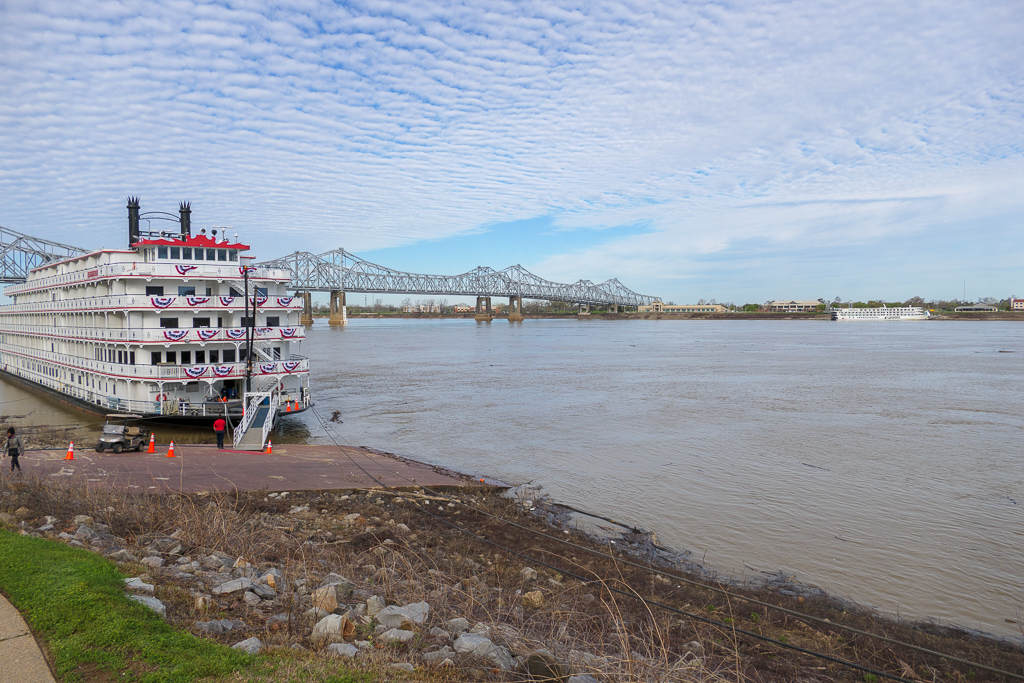
We woke up this morning to a beautiful sky in a new state for us, Mississippi. Our morning excursion took us to the largest octagonal house in the United States, Longwood.
It was mostly built by enslaved people (like most plantations), but there were also many skilled craftsman from Philadelphia working on the project. The entire structure had been built, requiring a million bricks, all made on site. The basement was finished, and the workers had started on fitting out the principal floor, ready to add windows and doors, plaster the walls, and so forth – it was going to be a beautiful summer house (a mere 30,000 square feet).
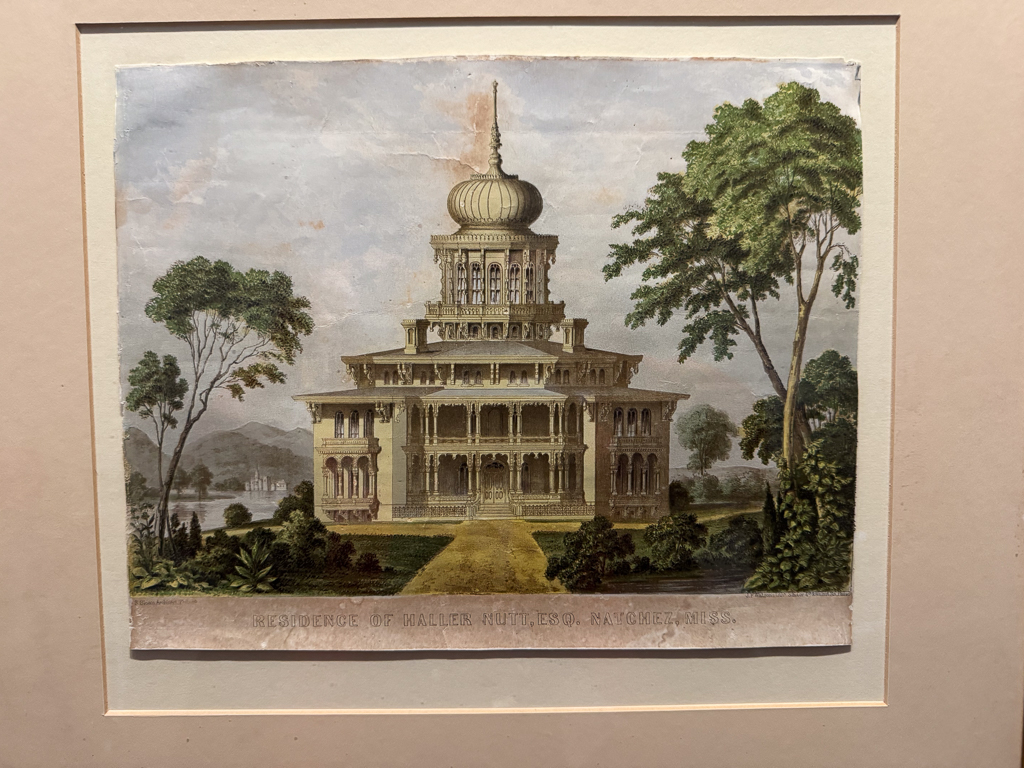
But it was April, 1861, and the Civil War had just begun. The Northern workers dropped tools and fled back to their homes. They never returned. The family moved into the basement rooms (probably 10,000 square feet) temporarily, planning to finish the project after the war. But the owner, Haller Nutt, died in 1864, and his wife never had enough money to finish the house. Neither did his children. Or their children. By 1969, no one lived in the house and it was in bad condition; Kelly McAdams, a Texas millionaire, bought the house for $250,000, spent a similar amount to repair it, and donated it to the Pilgrimage Garden Club to be used as a museum – on the condition that it never be finished.
Here’s what the outside looks like today.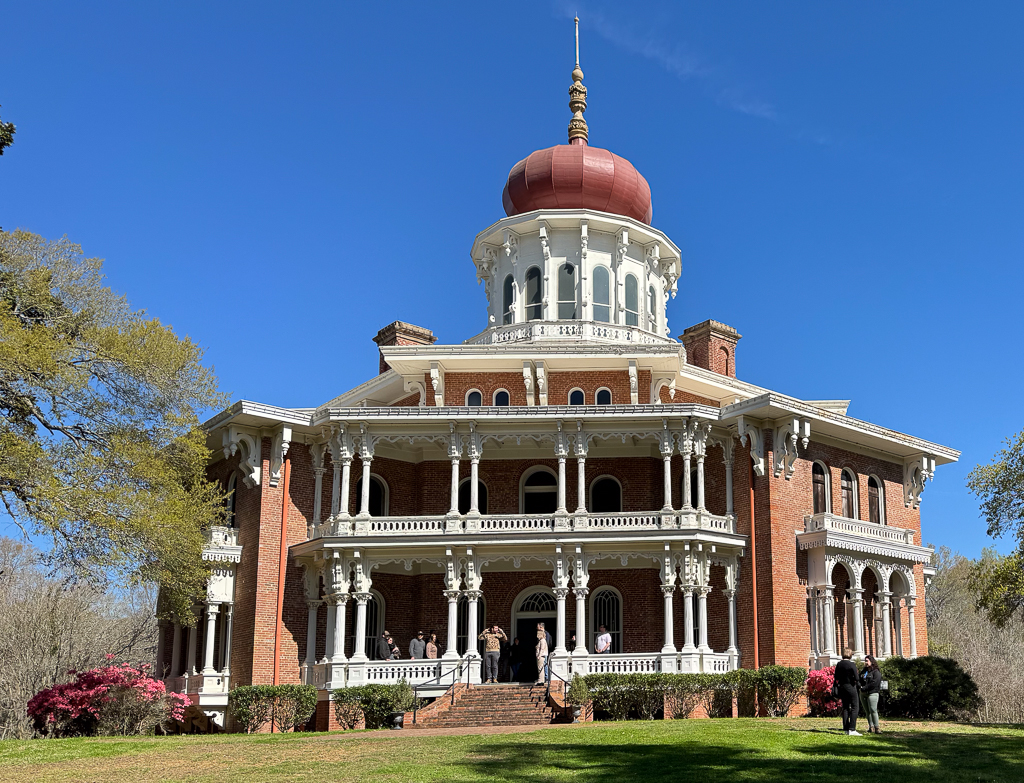
The basement is fully furnished (most of the furniture is original to the house). Our guide James (who is also the curator) showed us this bedroom chair, which has a special feature for overnight use.
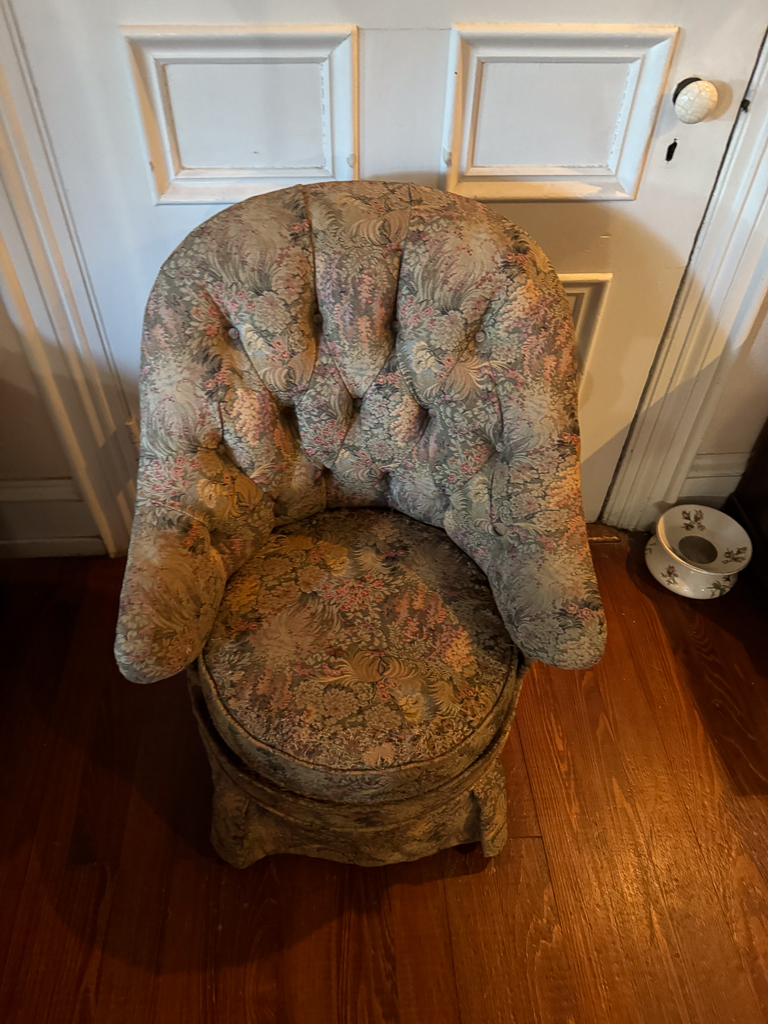
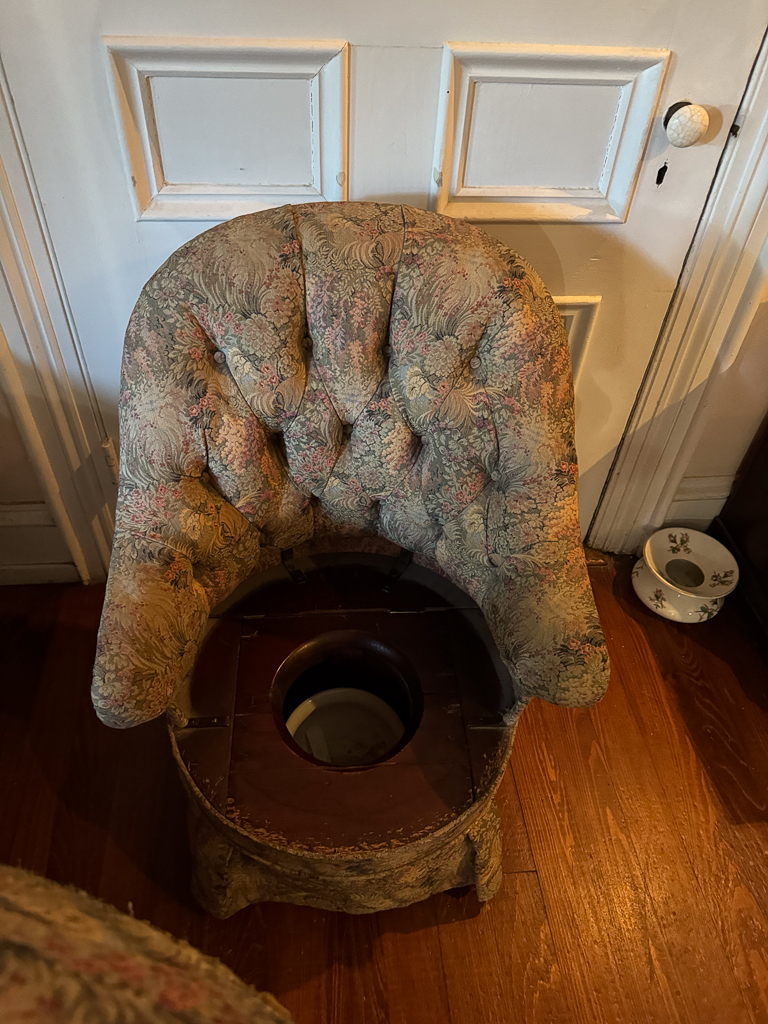
There were other interesting touches, too, like this plate warmer near the fireplace. The interior rotated, so you could get the plates nice and hot, then turn them back into the room and use them.
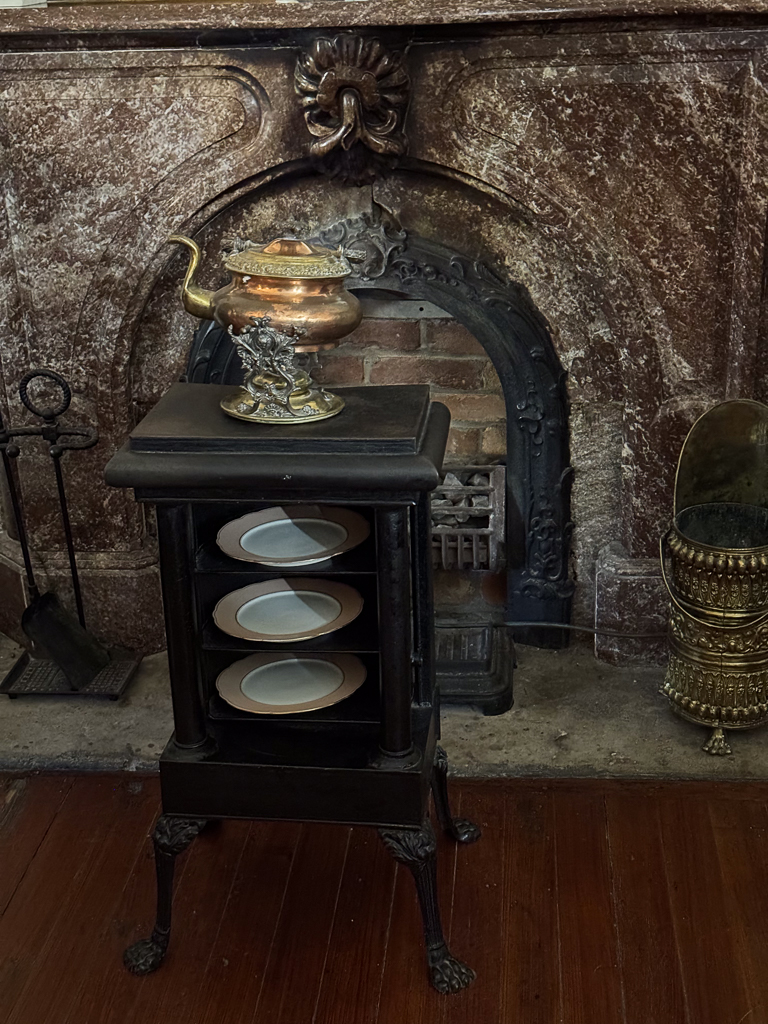
We ascended the stairs to the first floor to see what the rest of the house looked like.
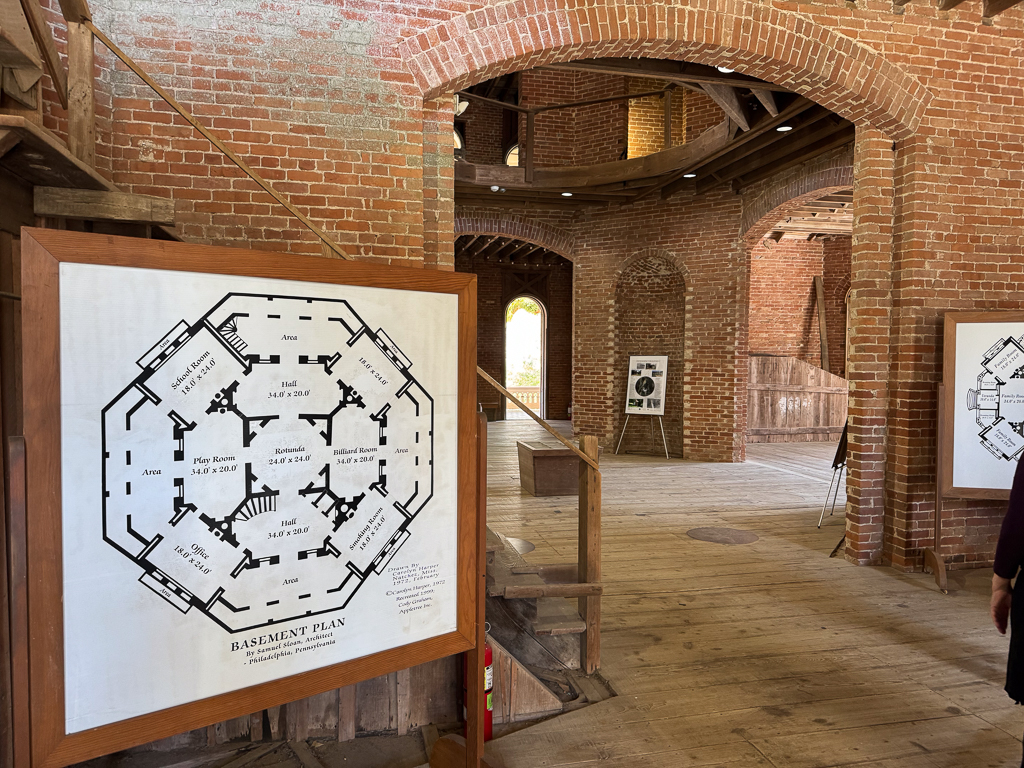
There was no glass in the windows (screens were added once the house became a museum); the ceiling beams were all visible; and yet, it was still beautiful.
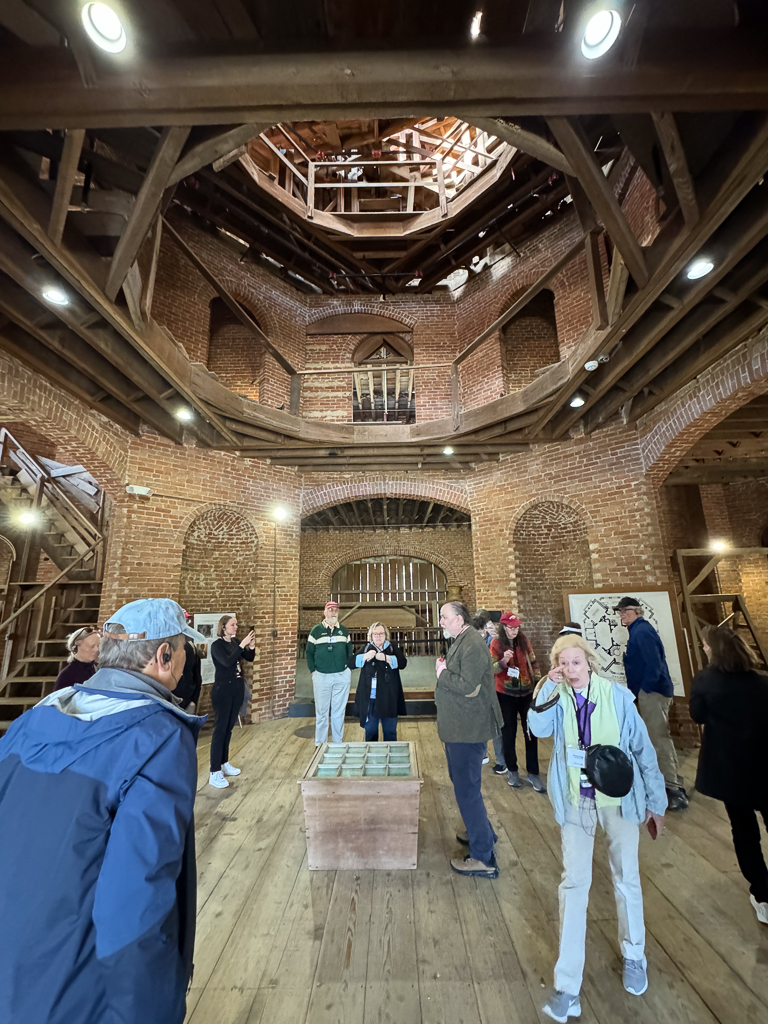
The house was intended as a summer house, and it gets hot in Natchez, so they’d designed a huge airshaft that ran from the first floor to the attic. The idea was to open a window in the cupola at the top level and let natural ventilation cool the house.
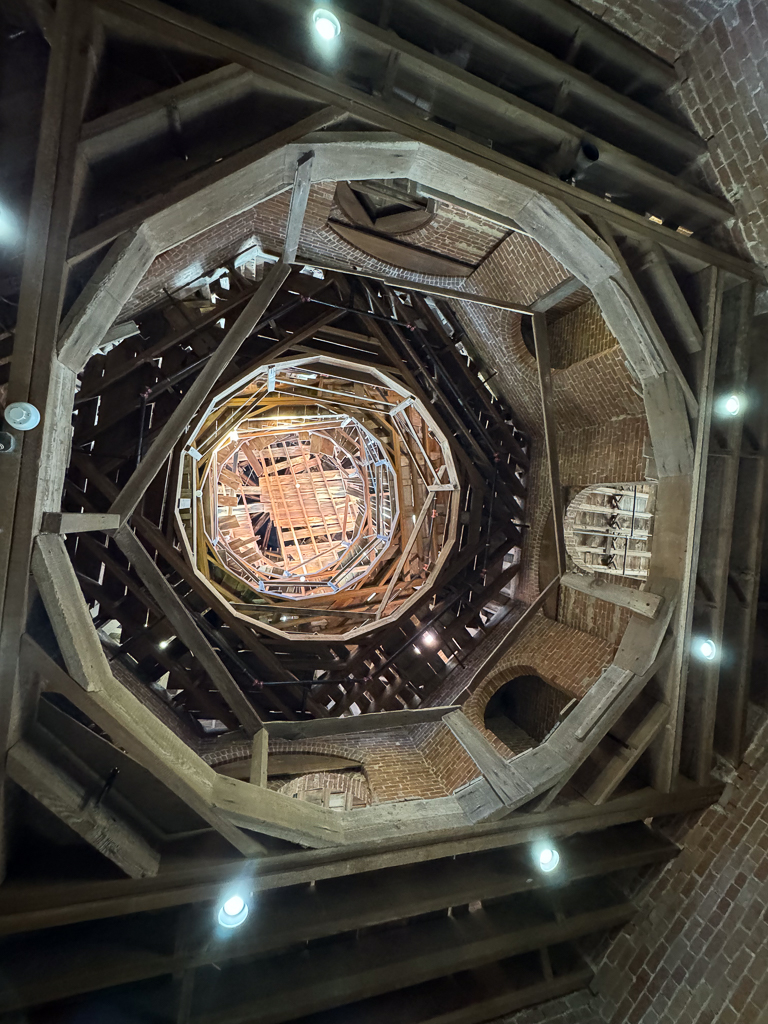
There was a piano in the basement; its box was still in the house, here on the first floor!
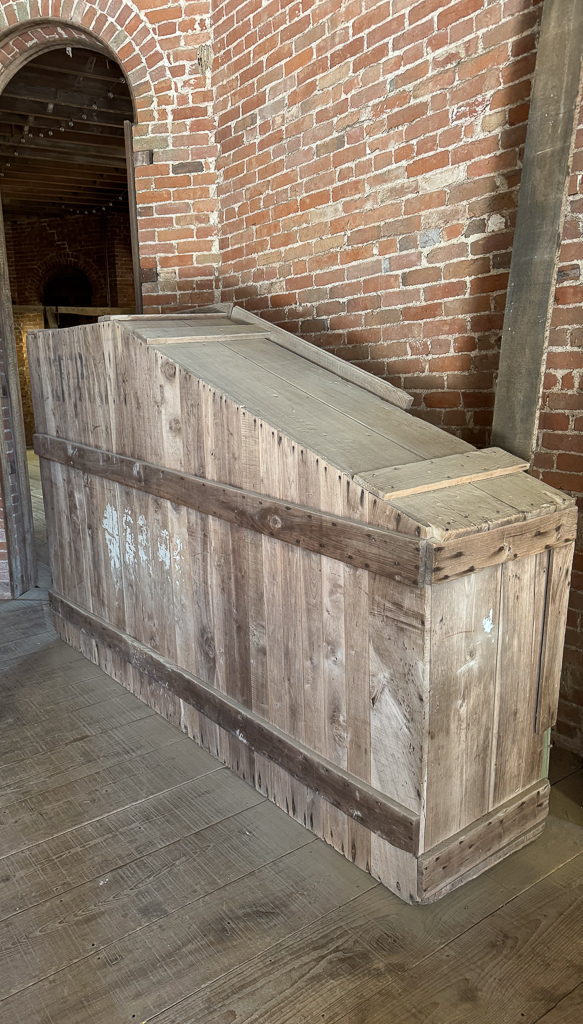
There was a great view from the veranda.
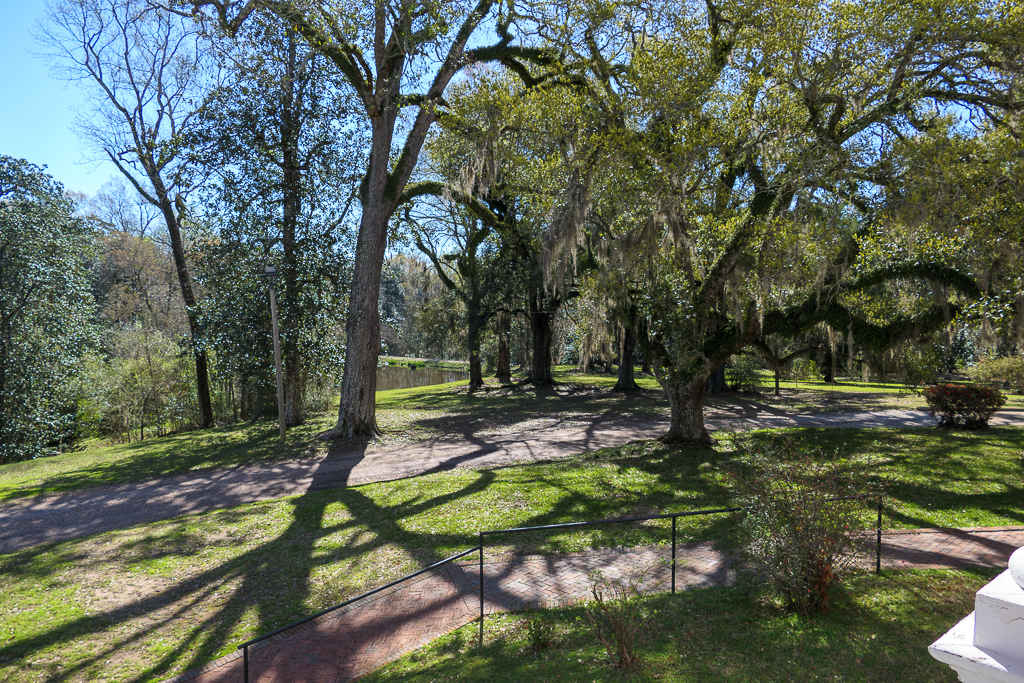
You could see the workmanship that had gone into the house; the decorative capitols on the columns around the veranda are intricate and still mostly in good shape.
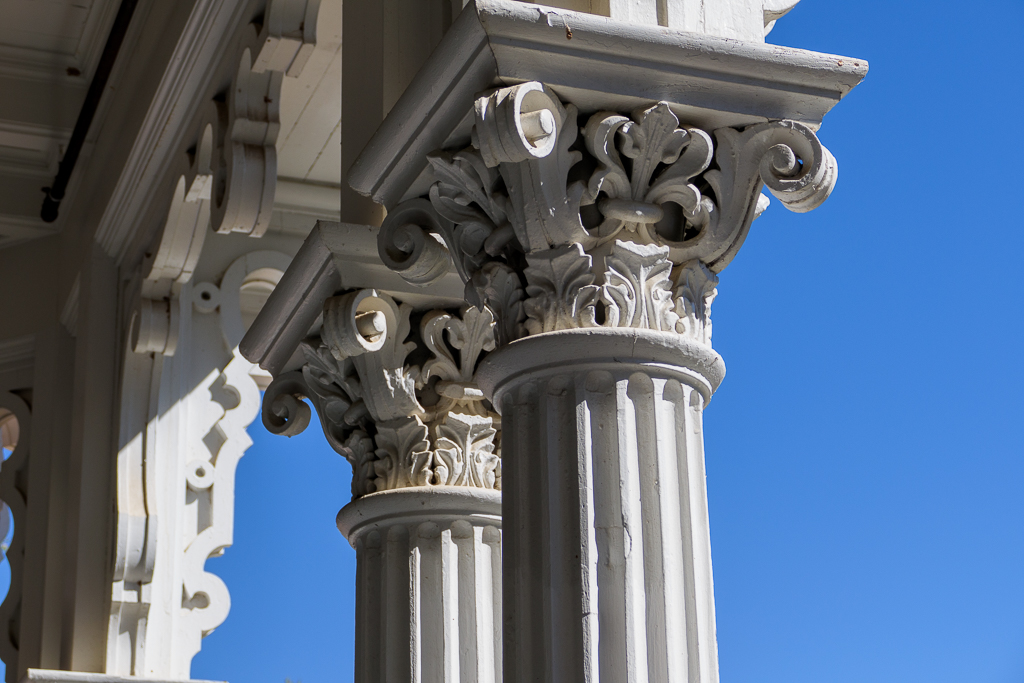
We couldn’t go to the higher levels, so we went back out to the lawn and stopped at the Selfie Station (probably not part of the original design).

Our afternoon excursion was “Path to Freedom”, about the Civil Rights movement in Natchez. We started with a short visit to the Zion Chapel AME Church, where we were greeted by the pastor and heard a few beautiful Gospel songs from their soloist.
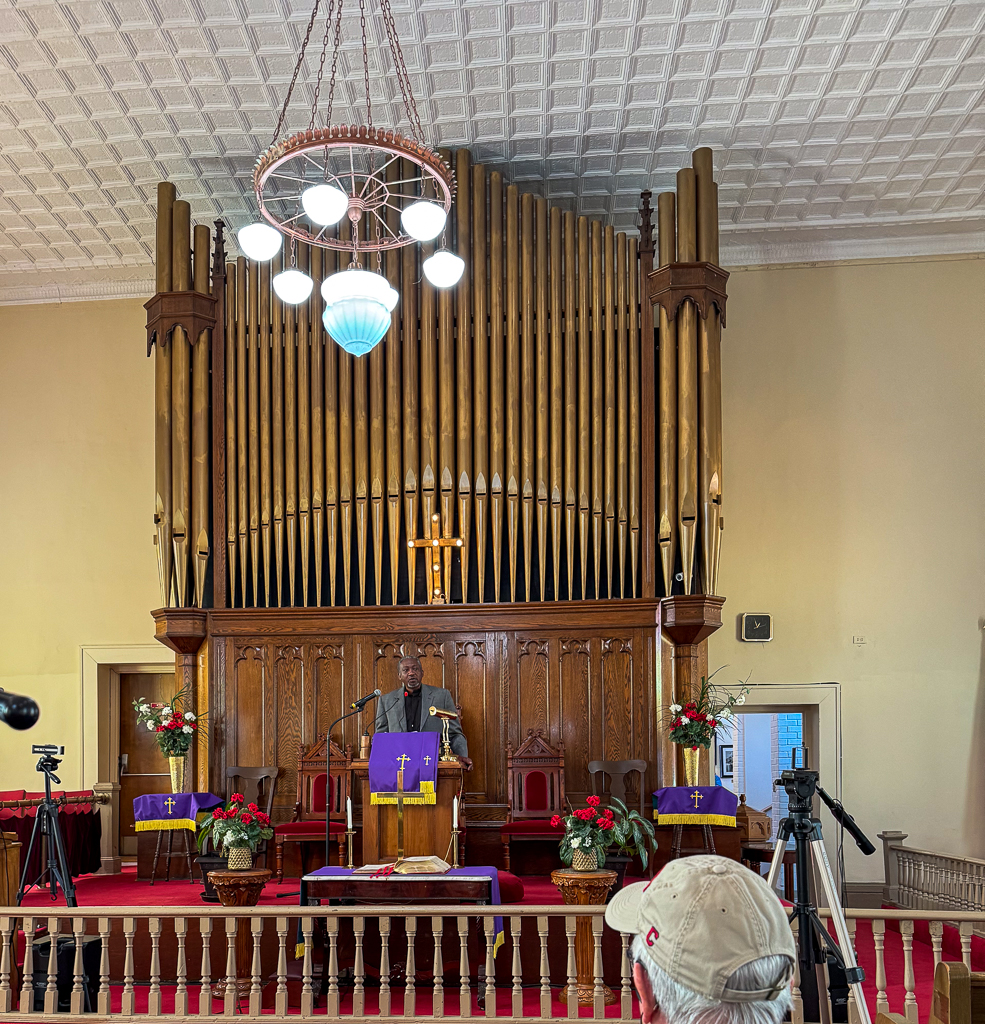
We traveled to the William Johnson House, part of the Natchez National Historical Park. Johnson was a free man of color who built up a barbering business and became wealthy; he was killed in 1851 because of a land dispute and his murderer was never convicted because he claimed to be white, so testimony from non-whites was inadmissible. Later investigations showed that his murderer was also a man of color, but it was far too late.
Our next stop was the Natchez Museum of African American Culture. A guide met us and told us a bit about Natchez black history and the Civil Rights movement; then he showed us a video from the Mississippi Department of Archives and Museums which gave a very superficial overview of the subject (I couldn’t read the copyright date on the video because it was a blurry VHS copy, but I think it was 1997).
The exhibits in the museum are a mixed bag; there are artifacts and lots of books and magazines, all mixed together.
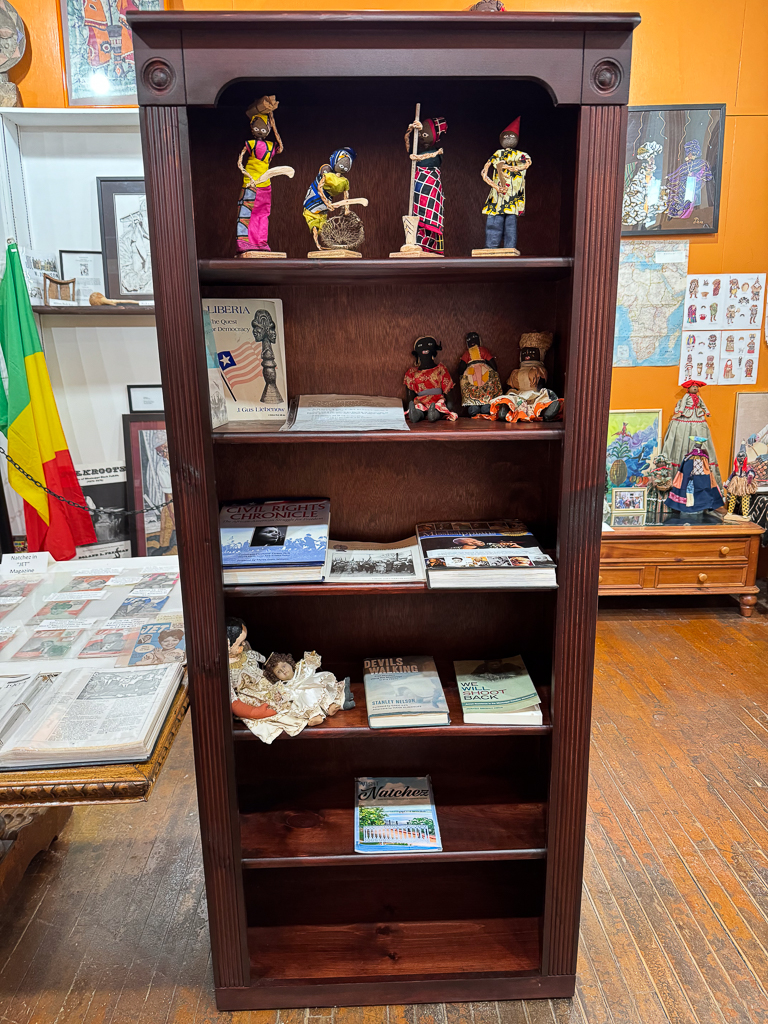
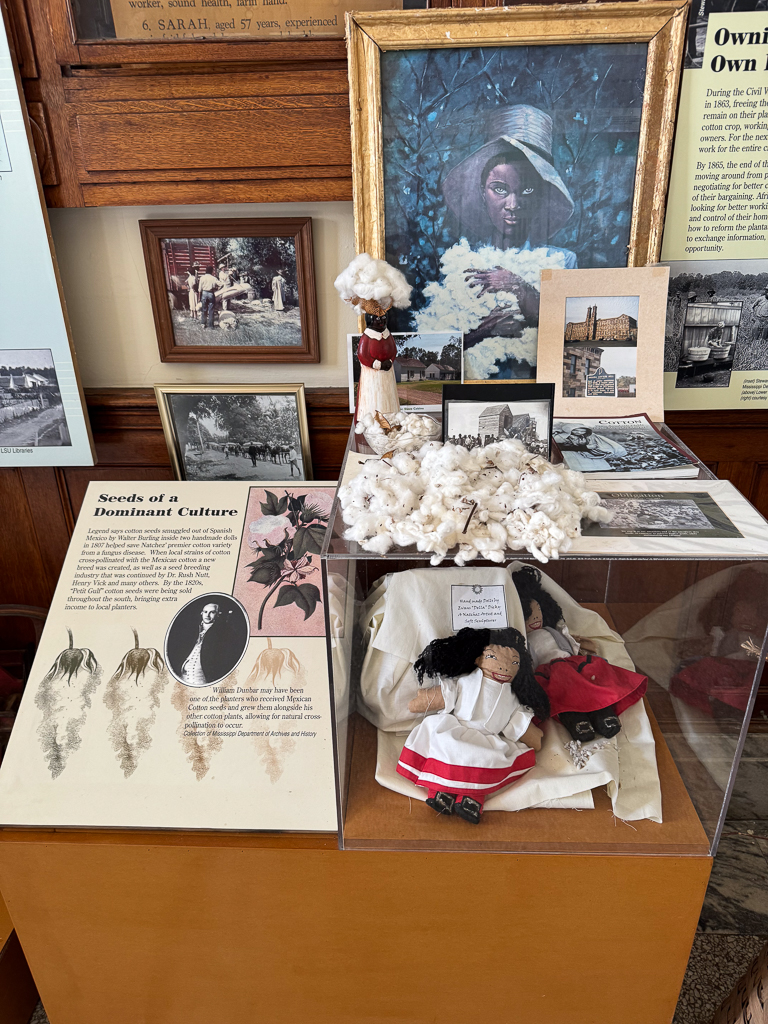
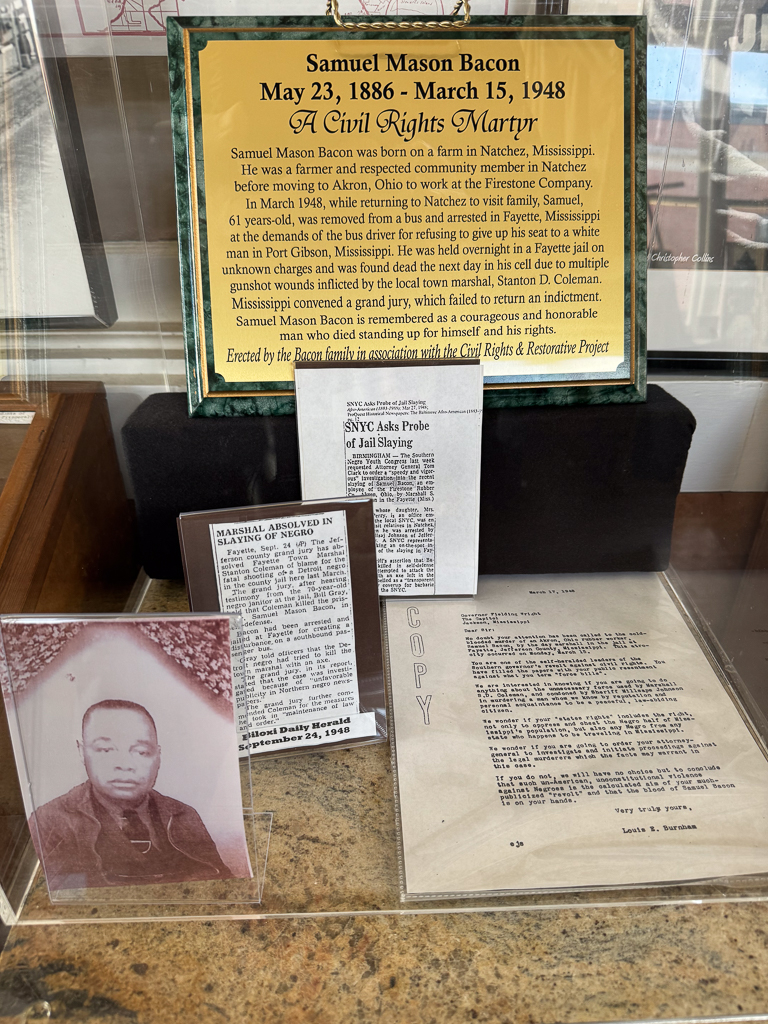
Despite the technical issues, I found the museum moving; it gave me a little bit more of an idea of what it was like to be black and face active discrimination (not just covert racism).
We next stopped at Forks in the Road, which was the site of the largest slave market in the South. There’s not much to see there now, just an open field, but there are many interpretive signs explaining the market and the economic environment it operated in.
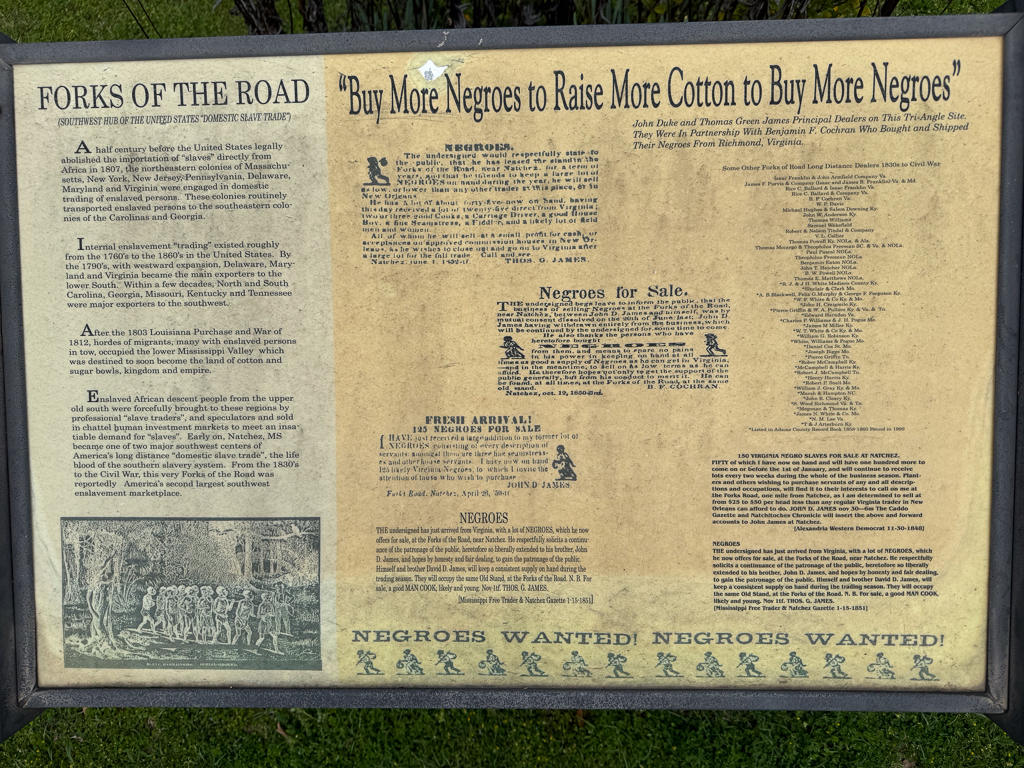
Our final stop was the “Proud to take a Stand” monument, commemorating the more than 400 people who were thrown into Parchman Prison for protesting for civil and voting rights in 1965.
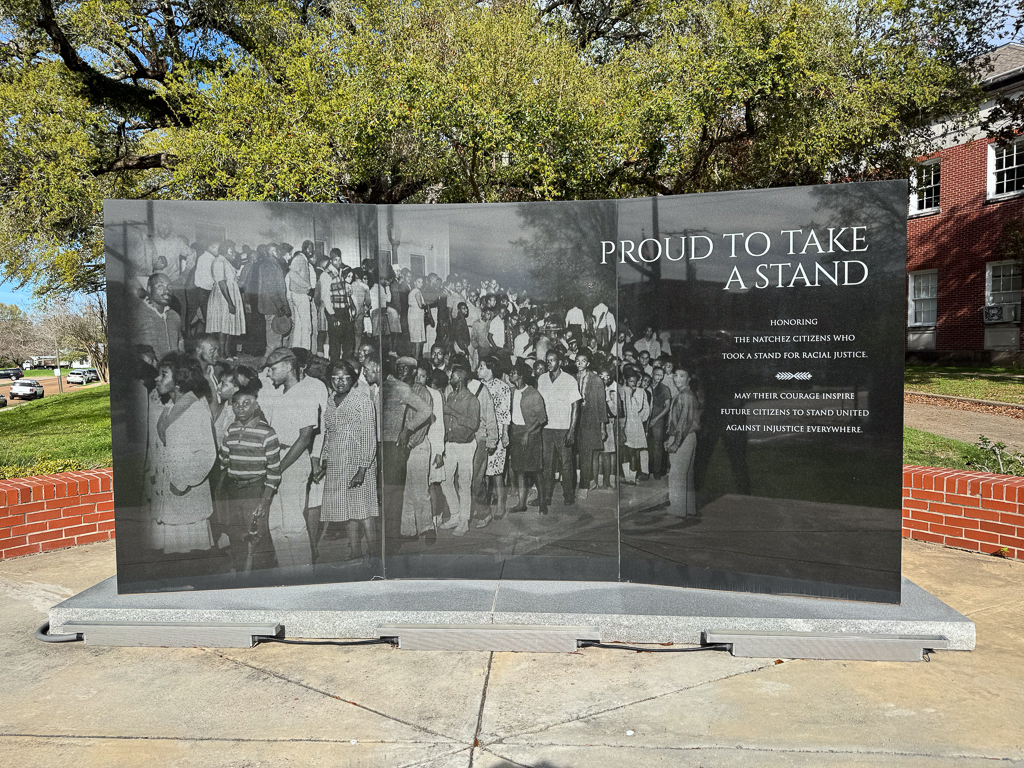
We walked back to the ship along a trail above the waterfront.
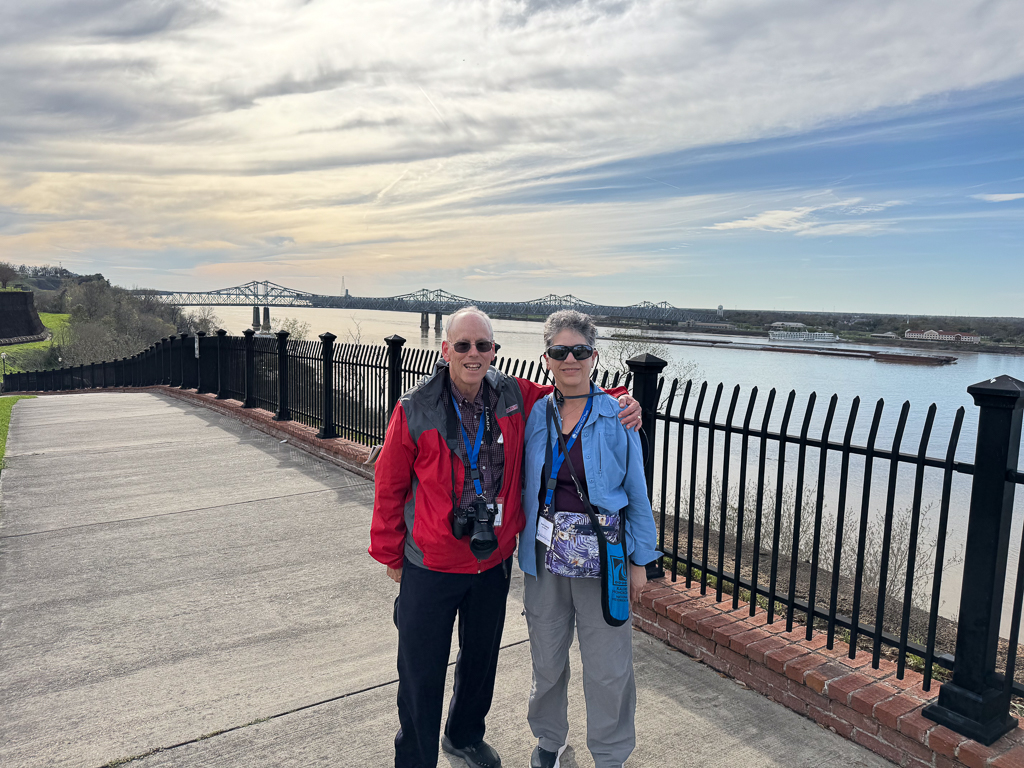
I’d like to come back to Natchez sometime and explore it more thoroughly.
We spent a whole week around Natchez (camping RIGHT across the river in Vidalia, Louisiana), and we want to go back, too!
I hear you about getting a better feeling for what it was like being black and facing active discrimination…we’ve been inundating ourselves the last 2-3 weeks, from Jackson, MS to Montgomery, AL to Birmingham.